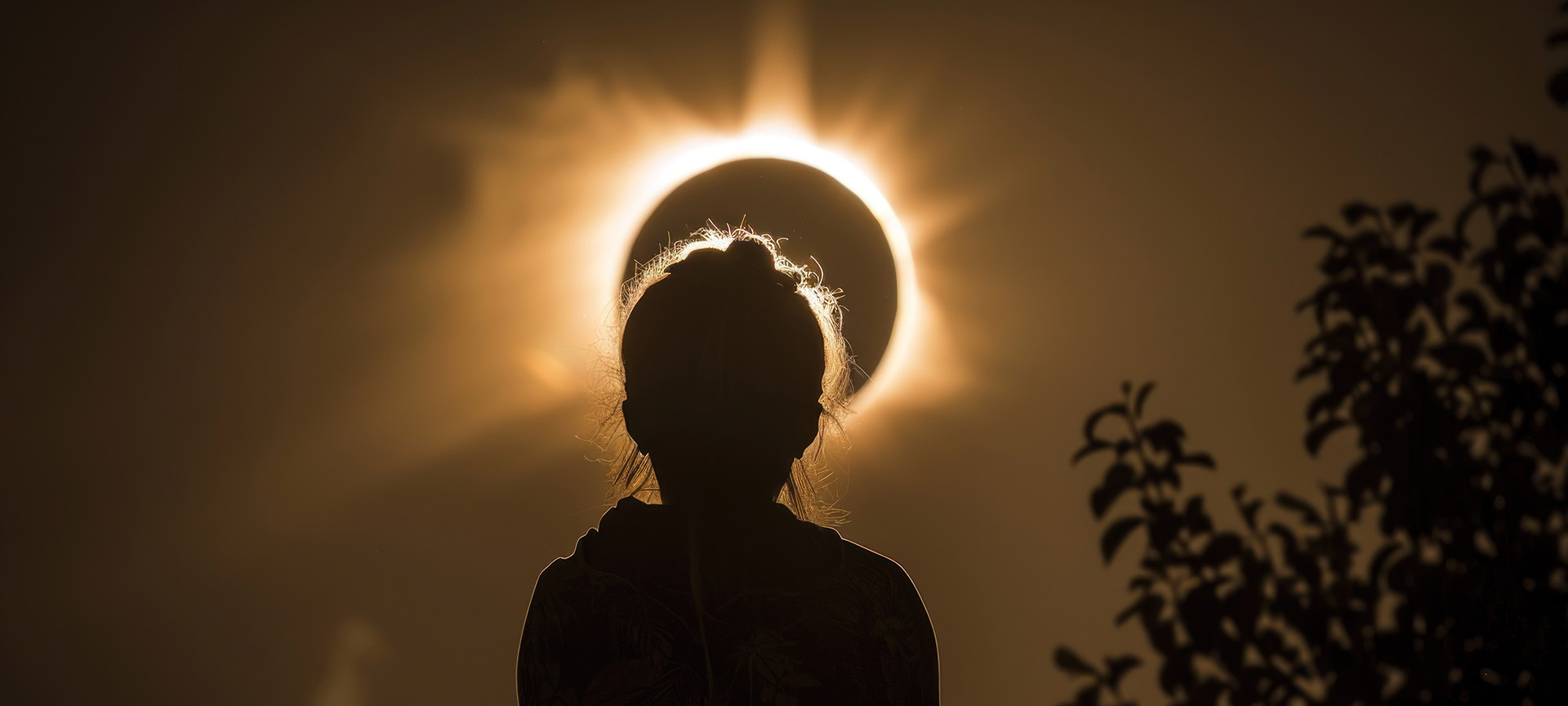
2026-2028 Guide to total solar eclipses in Spain
A total solar eclipse is one of nature's most fascinating spectacles; those who have experienced it will never forget it. Spain is fortunate to be the destination where this fascinating phenomenon can be experienced in 2026, 2027, and 2028. It will be a unique opportunity to witness, in succession, the first total solar eclipses of the 21st century occurring in continental Europe.
Debe activar Javascript para poder utilizar este servicio
-

An unforgettable celestial spectacle
Everyone agrees: Experiencing a total solar eclipse is an experience you will remember forever. As the sun fades behind the moon and darkness falls, awe and excitement build up until the breathtaking moment of totality arrives. Just then, cries of enthusiasm and admiration erupt as we contemplate, for a brief moment and without filters, the fascinating beauty of the solar corona.Witnessing a total eclipse is something extraordinary and rare. The last eclipse that was visible from the Iberian Peninsula occurred in 1912. More than a century later, the two total eclipses of 2026 and 2027, along with the annular eclipse of 2028, which will cover most of Spain, will make the country the perfect destination to witness one of nature’s most spectacular events.
-

Where to see the total eclipse of 2026
The first eclipse in Spain will occur at sunset on 12 August 2026. There's a good chance of clear skies and to enjoy the observation without any issues, since this will occur during the summer. The strip where the total solar eclipse will be visible crosses, from east to west, a large part of the northern half of the country from Galicia up to Balearic Islands. It passes through the territory of up to 13 autonomous communities, including numerous destinations and inland towns and cities such as Oviedo, Santander, Leon, Bilbao, Zaragoza, Valencia and Palma. These are the areas in Spain where the total eclipse can be seen:
Galicia Part of the provinces of A Coruña and Lugo Asturias The entire territory Cantabria The entire territory Basque Country The entire province of Álava, and part of the provinces of Gipuzkoa and Bizkaia Navarre Part of the territory La Rioja The entire territory Castile and León All of the provinces of Leon, Palencia, Burgos, Soria, and part of the provinces of Zamora, Valladolid and Segovia Aragón The entire province of Teruel, and almost all of the province of Zaragoza and part of the province of Huesca Catalonia Part of the province of Tarragona and south of the province of Lleida Castile-La Mancha Part of the provinces of Guadalajara and Cuenca Community of Madrid Northern part of the territory Valencian Community The entire province of Castellón and north of the province of Valencia Balearic Islands The entire territory From the rest of the country it will be seen as a partial eclipse. On this website of the National Geographic Institute (IGN) you can check the maps and schedules of the 2026 solar eclipse in all Spanish municipalities.
-

Where to see the total eclipse of 2027
It will also be in summer, on the morning of 2 August 2027. This time, the band of totality will cross Spain through the Strait of Gibraltar, from west to east and will encompass: the autonomous cities of Ceuta and Melilla; almost all of the province of Cadiz; most of the province of Malaga, and the south of the provinces of Granada and Almería. This total solar eclipse will be notable for its long duration: for example, in cities like Tarifa, Ceuta and Melilla it will last more than four and a half minutes, while in Cadiz if will last three minutes, and in Málaga will reach approximately two minutes. It will appear as a partial sun eclipse in all other provinces. The website of the National Geographic Institute (IGN) shows the maps and schedules of the 2027 solar eclipse in all Spanish municipalities.
-

Where to see the 2028 annular eclipse
At sunset on January 26, 2028, the spectacular “ring of fire” of an annular solar eclipse will also occur in Spain. In this case, since the moon is at its furthest point from the planet when the alignment occurs, its shadow is smaller and does not completely cover the solar disc, leaving a kind of reddish ring visible around it. Covering almost half of Spain, from southwest to northeast, several cities, such as Cadiz, Malaga and Tarifa to, will experience a rare privilege, witnessing an annular eclipse just six months after the total eclipse of 2027. The locations where the annular eclipse of 2028 can be seen are as follows:
Autonomous City of Ceuta The entire territory Andalusia Across almost the entire region Murcia Across almost the entire region Extremadura Almost the entire province of Badajoz and the southeast of the province of Caceres Castile-La Mancha All of the provinces of Ciudad Real, Albacete and Cuenca, and part of the provinces of Toledo and Guadalajara Autonomous Region of Valencia The entire territory Comunidad de Madrid Southern part of the territory Aragón The entire province of Teruel and part of the province of Zaragoza Catalonia The entire province of Tarragona and part of the provinces of Lleida and Barcelona Balearic Islands Ibiza and Formentera In the rest of the country it will be seen as a partial eclipse. On this website of the National Geographic Institute (IGN) you can check the maps and schedules of the 2028 annular eclipse in all Spanish municipalities.
-

Tips and recommendations
- It's a good idea to plan your holiday well in advance to avoid complications. If you can, plan a trip of a week or more so you can participate in the various special events and activities planned for the occasion during your stay. - Many of the areas where total eclipses will pass include Starlight-certified destinations and locations, which have ideal skies for stargazing. Take the opportunity to enjoy astro-tourism and astrophotography. - Try to find a clear horizon, free of tall buildings, trees, mountains and any other element to observe the total eclipse. If you are not inside the paths of totality, remember that you will be able to see it as a partial solar eclipse. - To enjoy the best experience, it is very important that you always take the precautions for safe solar eclipse observation. Please note that you should never look directly at a partial, annular or partial phases of a total eclipse without proper protection. To avoid risks, use certified filters and special glasses that are in perfect condition.
Travel plans for inspiring you










